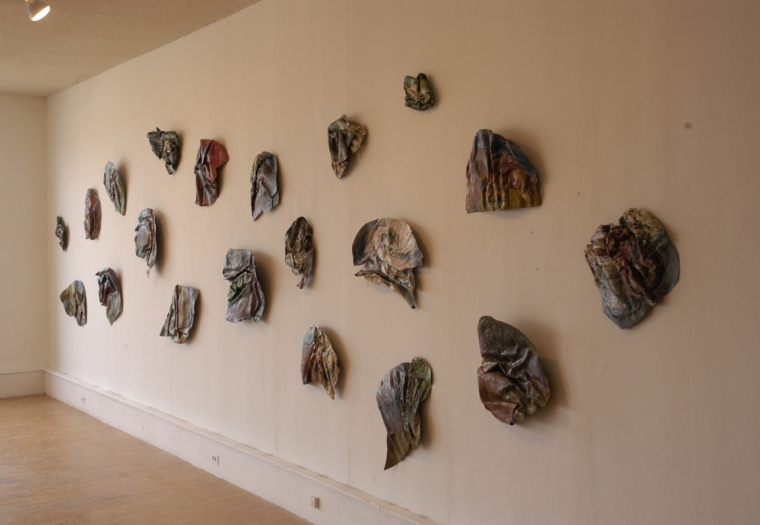Walks in the Wood
Walks In the Wood, N-dimensional
The title refers to an historical moment in art, and says something about the technical aspect of the work; the substrate is OSB board, with it’s ‘’ ready-made “’ spaces “in the wood’. ‘Walks’ is meant to invoke a famous phrase of Klee’s—‘going for a walk with a line’ (Pedagogical Sketchbook). What is proclaimed in Klee’s words is a basic tenet of modernism, the autonomy of the artwork. Autonomy means that the line has an aesthetic presence and expressive force in itself before acting as a means of describing or representing something.
‘N-dimensional’ is my term for a special kind of space. I would describe this space as a synthesis of three kinds of space to be found historically. The most recent is the literal space of the work, its actual extension, the three-dimensionality of the support itself. This was established as an aesthetic object in the l960’s under the name of Minimalism. Before that Modernist space was flat, or ‘equivalent’ space: the equal value of figure and ground. Cubism was its supreme expression. Preceding modernism for four hundred years was ‘classical’ or representational space. Based on the conventions of perspective, this pictorial or “illusionist” space has been the dominant form in western painting.
My synthesis would be a combination and balance of these kinds of space: literal space, flat space and deep space. The format is important. I keep to the space of the book. I am thinking of books in ancient art, illuminated manuscripts, the Book of Kells, Persian Miniatures, etc. However, my main reference is one particular painting from the l9th Century, “The Fairy Feller’s Masterstroke “ by Richard Dadd (l857). Ten years in the making this little painting has the amazing quality of being simultaneously ‘flat’ and spatial, and an unusual psychic effect results. I am working toward that effect but with an entirely different approach—what I would call a NEOMODERNIST sensibility.
Gordon Payne
Image Credit: Jeremy Payne Photography



